Do Binoculars Scare Birds? Guide For Birding Binoculars
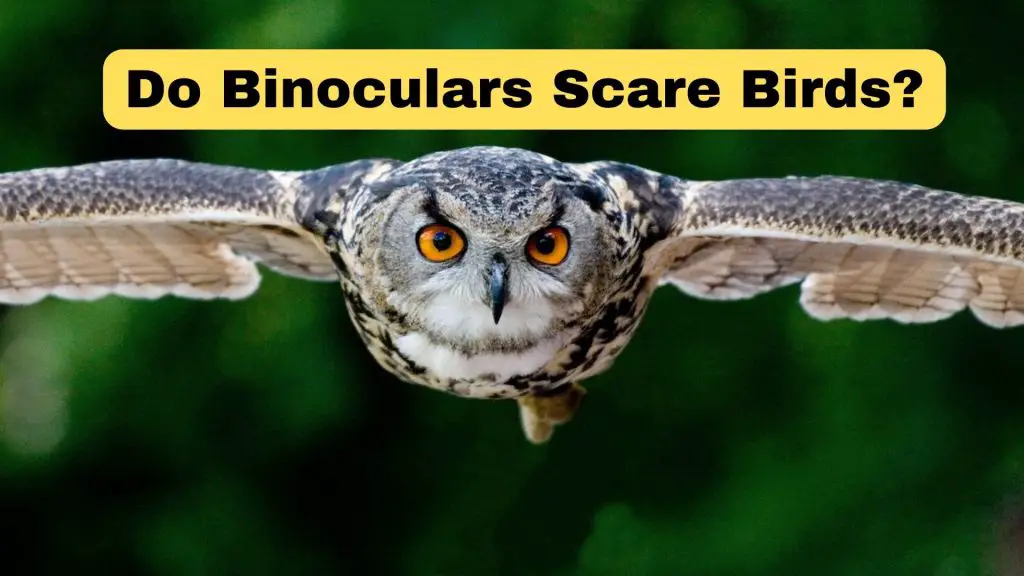
Are you planning to take up bird watching as a hobby?
If so, you may have this question in your mind: do binoculars scare birds? It’s a common concern among bird watchers, and for good reason.
After all, what’s the point of having a pair of binoculars if they scare away the very creatures you want to observe?
In this discussion, we’ll explore the answer to this question and provide some tips for bird watchers to help minimize any potential disturbance to our feathered friends.
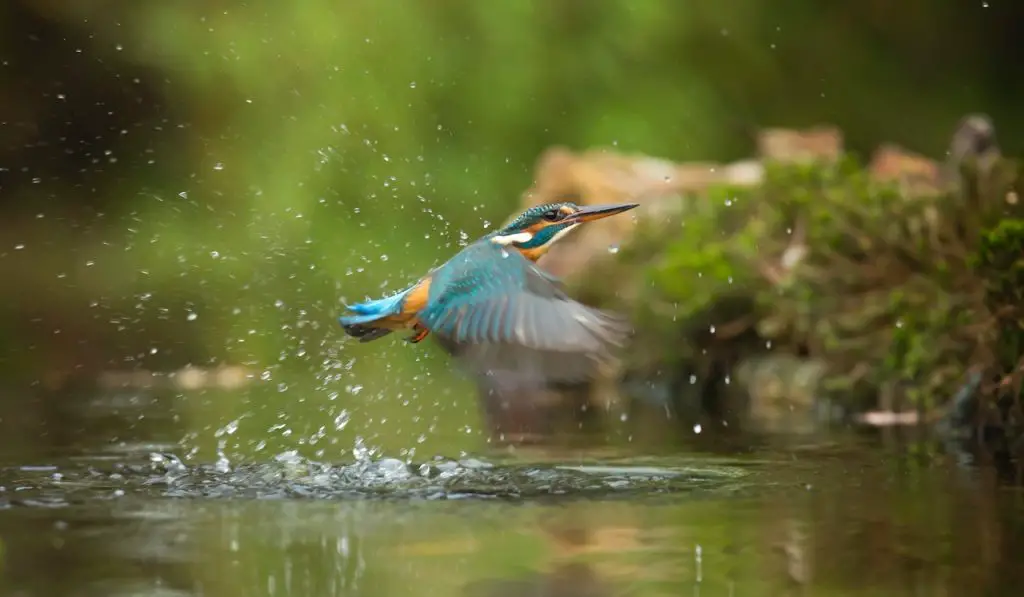
Do Binoculars Scare Birds?
While there are anecdotal reports of birds being frightened by binoculars, scientific studies have provided mixed results. Some studies suggest that birds do not perceive binoculars as a threat, while others have found that the size and shape of the binoculars may influence how birds react to them.
Personally, I have found that birds were more likely to fly away when I use larger binoculars compared to smaller ones.
This is because the size and shape of the binoculars can affect a bird’s perception of danger.
Birds, in general, have much better eyesight than humans, and they can perceive big lenses as the giant eyes of a large and potentially dangerous animal. This scares them and they fly away.
Another interesting observation is that birds may be sensitive to the movements of humans as they lift their binoculars to their eyes.
When looking at someone head-on, the bird may see their eyes being illuminated by daylight and appearing to be in line with the axis of the binoculars.
To the bird, this could look like two large eyes of a predator looking straight at them, causing them to take flight.
As a result, the bird may fly away just as the binoculars are about to be used, leaving the viewer with nothing but a vacant perch.
However, it has been observed that birds can gradually become accustomed to the presence of humans using binoculars over time.
This indicates an interesting behaviour that birds don’t perceive binoculars as a threat in the long term.
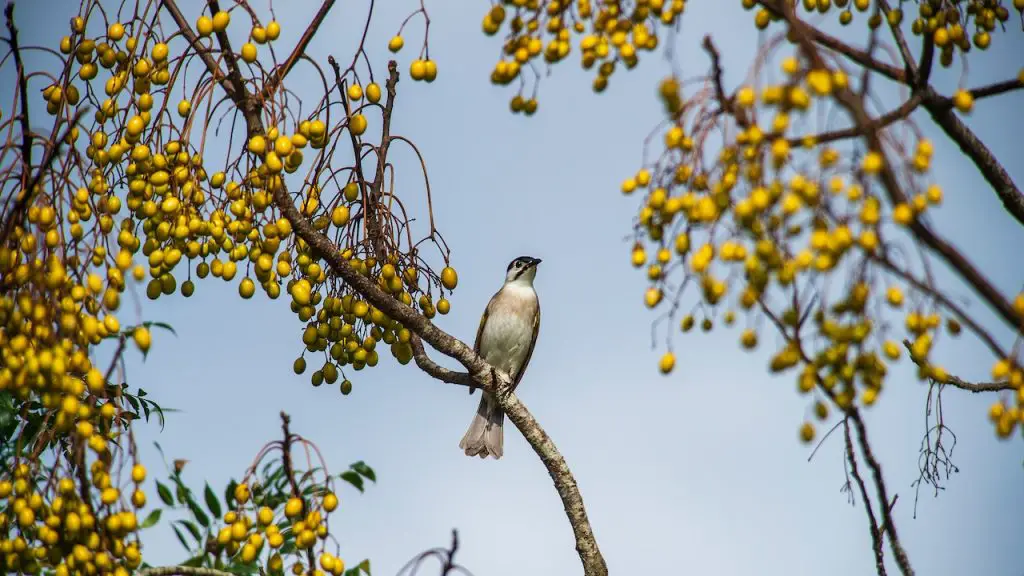
Tips For Not Scaring the Birds While Bird Watching
If you enjoy bird watching, you’ll want to make sure you don’t inadvertently scare the birds away. Here are some tips to help you minimize your impact on the birds:
- Blend In: Wear clothes that blend in with the environment: Avoid wearing bright colors or anything that stands out. Try to blend in with the surroundings by wearing natural colors.
- Move slowly and calmly: Avoid sudden movements or loud noises that could startle the birds. Move slowly and deliberately, giving the birds time to adjust to your presence.
- Use Small Binoculars binoculars: As we have discussed earlier, birds have exceptional eyesight, and big lenses look like giant eyes to them, which may scare them away. So, using small binoculars with a lower magnification power and smaller objective lenses can help to reduce the perceived threat to the birds. Small binoculars are also lightweight and easy to handle, making it easier to follow birds in motion without causing any disturbance to them.
- Use a hide: A hide is a shelter or camouflage that you can use to blend in with the surroundings. It can be as simple as sitting behind a tree or as complex as building a small shelter. A hide will allow you to observe the birds without disturbing them.
- Be aware of your shadow: Birds are often scared by the shadow of a human. Try to avoid casting your shadow over the birds or their nests.
- Don’t use flash photography: Using flash photography can startle birds and disturb their natural behavior. Avoid using flash and use natural light instead.
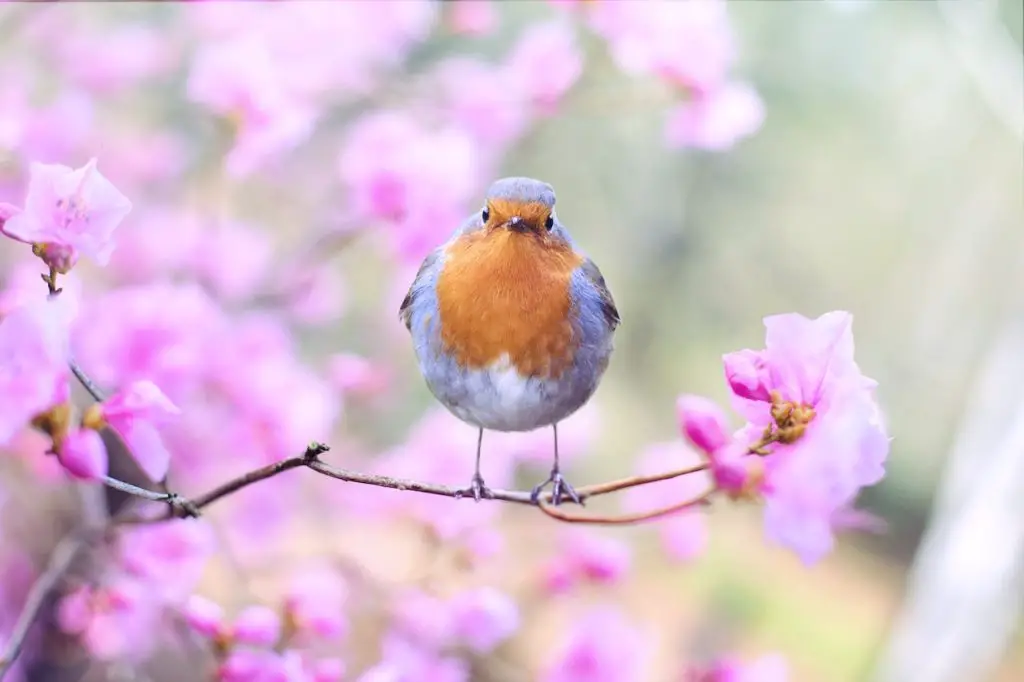
Factors To Choose Binoculars For Bird Watching WIth Important Tips
When it comes to choosing binoculars for bird watching, there are several important factors to consider.
Magnification:
Magnification is an important consideration when choosing binoculars for bird watching.
Binoculars with too much magnification can make it difficult to hold the image steady and may also reduce the field of view.
On the other hand, binoculars with too little magnification may not provide enough detail for bird watching. Most bird watchers prefer binoculars with a magnification of 8x or 10x.
Objective Lens Diameter:
The size of the objective lens is another important factor to consider. A larger objective lens will allow more light to enter the binoculars, providing a brighter image.
However, larger lenses also make the binoculars heavier and bulkier. For bird watching, a lens diameter of 32mm to 42mm is generally recommended.
Weight
Even a midweight (600-700gm) binocular can still cause discomfort in the neck and shoulders after a long day of birding.
It’s important to note that a lighter weight doesn’t necessarily indicate better quality binoculars, as heavier ones often have superior optics that result in brighter and sharper images.
Additionally, prioritizing light weight can lead to more fragile binoculars.
If the weight or size of your binoculars is an issue, a binocular harness can distribute the weight better.
Another option is to consider a compact model, such as 8×32 binoculars.
Focus Wheel
When it comes to using binoculars for bird watching, the focus wheel is an essential component.
You will be using it frequently, trying to get a clear view of the birds before they move away.
Therefore, it is essential to consider how the focus wheel feels in your hands.
Does it feel comfortable?
Does it move smoothly and stop precisely?
These are important factors to keep in mind when selecting the right pair of binoculars for your bird-watching needs.
Field of View:
While sharpness and brightness are essential features to consider when selecting binoculars, the field of view is equally important for birdwatching.
A wide field of view will assist you in locating birds and keeping them in sight as they move.
This factor is often overlooked in comparison to image quality, but it should not be neglected.
A field of view of at least 300 feet at 1000 yards is recommended for bird watching.
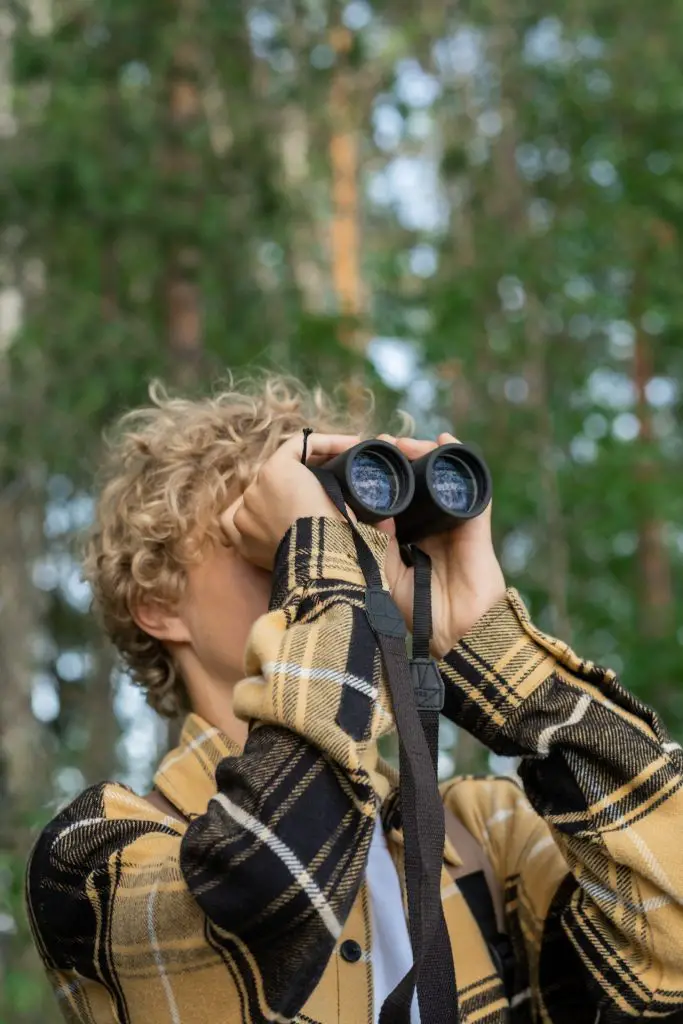
Image Quality
Image quality is an important consideration, as it can affect your ability to identify birds.
Look for binoculars with good color reproduction, contrast, and sharpness. Also, look for multicoated lenses and prisms for best and sharp images with details.
Are You Able To Immerse Into The Image
Are the binoculars able to provide an immersive experience?
There are some binoculars that can provide a feeling of being completely immersed in the scene with an image that is bright and sharp from edge to edge.
However, there are other binoculars that can give you the sensation of looking through a tunnel even if the image at the end is bright and sharp.
This experience depends on the combination of field of view and edge-to-edge clarity of the binoculars’ optics.
Eye Cups and Eye Relief
If you’re not an eyeglasses wearer, you might prefer to extend the eyecups of your binoculars for a more comfortable viewing experience.
When adjusting the eyecups, do they click securely into place and stay there?
On the other hand, if you wear eyeglasses, make sure the binoculars have sufficient eye relief i.e at least 16-18mm.
This allows you to see the full image even with the eyecups dialed all the way in.
Try As Many Binoculars As You Can
Trying out binoculars before purchasing them is highly recommended as it can be a personal experience. Each birder has their own way of using binoculars and this can affect their choice of binoculars.
It is important to feel the binoculars in your hand, test the focus wheel, and see how well the image fills your eyes when looking at a bird.
Speciality stores such as Wild Birds Unlimited or bird festivals offer a range of binocular options to try.
Additionally, starting a conversation with fellow birders on a bird walk and inquiring about their experience can also be beneficial, and even lead to the opportunity to swap binoculars for a few minutes.
Low Light Performance
if you enjoy birding during early morning or late afternoon when the lighting conditions are not optimal a good low light capability is essential.
Binoculars with good low light performance will allow you to see birds in greater detail and clarity, even in dim lighting conditions.
Generally, binoculars with larger objective lenses, such as 42mm or 50mm, will allow more light to enter the binoculars and provide better low light performance.
Additionally, binoculars with high-quality lens coatings, such as fully multi-coated or phase-coated lenses, will improve image brightness and contrast.
According to a survey conducted by the Cornell Lab of Ornithology, over 60% of birders prefer binoculars with objective lens diameters of 40-42mm, while around 20% opt for larger lenses of 50mm or more for better low light performance.
It’s also worth noting that higher magnification doesn’t necessarily result in better low-light performance, as the image can become dimmer and lose detail as the magnification increases.
Warranty
It’s important to consider your intended use and the longevity you expect from your binoculars when making a purchase decision.
If you plan to use them frequently or for an extended period, investing in a pair with a longer warranty may be a wise choice.
Price:
Binoculars can range in price from less than $50 to several thousand dollars. While a higher price generally indicates better quality, there are many affordable options that are suitable for bird watching.
According to a 2019 survey by the U.S. Fish and Wildlife Service, there are an estimated 45 million bird watchers in the United States. Of those, 73% use binoculars for bird watching.
Some popular binoculars for bird watching include the Wingspan Optics Fieldview 8×32, Nikon Monarch 5 8×42, the Vortex Optics Viper HD 10×42, and the Zeiss Terra ED 8×42 & 10×42.
Conclusion
The question of whether binoculars scare birds is often debated, and we have done extensive research to provide you with information to help you make your own conclusions.
Our goal is to enhance your knowledge about optics and bird watching.
It is important to be mindful of unnecessary noise and movements while birding to avoid scaring away the birds.
Additionally, pointing binoculars directly at them can also cause them to fly away.
Therefore, it is recommended to find a safe and hidden spot to observe and enjoy the birds without causing any disturbance.
